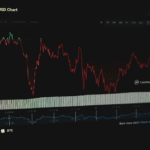
Liquidity, defined as the ease with which an asset can be bought or sold in a market without affecting its price, is paramount in digital asset trading. A liquid market allows for faster transactions at stable prices. For digital assets, this is vital due to the inherent volatility seen in this sector.
Strategic Diversification Across Platforms
One key approach to ensuring liquidity is diversification—not just in terms of holding a variety of digital assets but also through engaging multiple trading platforms. Different exchanges have unique liquidity levels, and participating in several platforms can mitigate the risk of low liquidity on any single platform.
Leveraging Algorithmic Trading
Algorithmic trading is another cornerstone of modern liquidity strategies. By using algorithms, traders can execute large orders or complex trading strategies with high speed and accuracy, thereby minimizing the market impact. These algorithms help maintain consistent liquidity by matching buy and sell orders efficiently.
Smart Order Routing
Smart Order Routing (SOR) systems are essential tools that automatically find the best trading venues across the global landscape. By analyzing factors such as price, cost, and speed, SOR ensures that trades are executed at the most favorable conditions, thus enhancing trade efficiency and liquidity.
The Role of Market Makers
Market makers are crucial in managing liquidity as they commit to buying and selling specific assets at quoted prices. Their role helps to reduce spread—the difference between buying and selling prices—which in turn stabilizes asset prices and ensures that the market remains liquid and functional.
Utilizing Peer-to-Peer (P2P) Networks and Financial Tools
P2P platforms provide a direct avenue for traders to interact without the need for intermediaries, offering greater control over the trading process and potentially better rates due to reduced transaction costs. Furthermore, tools such as crypto-backed loans and debit services allow for quick liquidity conversion between cryptocurrencies and fiat, enhancing financial flexibility.
Navigating Regulatory Landscapes
The regulatory framework surrounding digital assets can significantly influence market liquidity. Regulations that promote transparency and protect investor interests tend to attract institutional investors, thus deepening market liquidity. Conversely, regulatory uncertainty can deter investment and stifle liquidity.
Advanced Liquidity Techniques: Arbitrage and Hedging
Sophisticated traders might engage in arbitrage—taking advantage of price discrepancies across different markets. This not only helps in risk management but also adds to market depth and liquidity. Similarly, hedging strategies can protect against price volatility, contributing to a more stable market environment.
Consultancy and Strategic Advisory
Expert consultancy services play a vital role in formulating effective liquidity strategies. By providing tailored advice based on comprehensive market analysis and the latest industry trends, consultants help traders and investors optimize their liquidity management and trading strategies.
Efficient liquidity management is essential for successful digital asset trading, necessitating a multifaceted approach that includes leveraging technology, diversifying trading venues, and adhering to regulatory standards. By employing these strategies, traders can enhance their operational efficiency and market performance.
Engage with Kenson Investments Today
Take the first step towards a secure digital future. Contact Kenson Investments to discuss how we can support your journey in the digital asset market without the complexity of traditional asset management. Let us help you explore a broad range of digital opportunities tailored to your unique needs.














